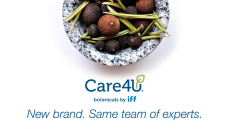Science builds for bilberry extracts kidney benefits
protect the kidney from the damaging effects of potassium bromate,
suggests a new study with mice.
Animals fed a daily dose of the extract for five days and given a single dose of potassium bromate (KBrO3) showed lower levels of markers of oxidative stress and kidney damage than control animals, reports the study in the Journal of Agricultural and Food Chemistry. "The protective effects of anthocyanin-enriched bilberry extract on KBrO3-induced kidney damage is due to an increased antioxidative capacity of kidney tissue," wrote lead author Li Bao from Shenyang Pharmaceutical University in China. According to background information in the article, KBrO3 has been used as a food additive such as in the bread-making process, and is also an oxidising agent found in drinking water as a disinfection by-product. Moreover, there have been concerns raised from its discovery in bottles of mineral water both in the US and in Europe. However, the chemical has been reported to cause clinical intoxications, which can result in severe and irreversible hearing loss and also has been linked to kidney damage and renal tumours. It is reported to cause the formation of free radicals, which induce oxidative stress, which is thought to contribute to the ageing process and several chronic diseases. The Chinese researchers administered doses of 50, 100 and 200 mg/kg bilberry extracts (Mirtoselect, Indena) over five days. A single dose of potassium bromate (200 mg/kg) was also administered to induce serious kidney damage. After receiving the bilberry extracts the mice exhibited a reversal in blood levels blood urea nitrogen (BUN) and creatinine to normal levels. In addition, a decrease in levels of malondialdehyde (MDA) in the kidneys, nitric oxide (NO), and xanthine oxidase (XOD) were reported. "The present finding is the first report on the effect of anthocyanin-enriched bilberry extract (42 per cent of anthocyanins) on serum BUN and creatinine levels in mice treated with KBrO3," wrote Bao. The antioxidant activity increased in kidney tissue, as measured by the oxygen radical absorbance capacity (ORAC) levels, stated the researchers showing a reduction in the level of oxidative stress. "These results warrant further investigation into the pharmacology of bilberry extract and its major anthocyanins under physiological oxidative stress conditions," stated the researchers. "Further research could contribute to the discovery of a bioactive phytochemical that ameliorates physiological dysfunction due to lifestyle-related diseases such as hypertension and metabolic disorders," they concluded. Commenting on the research, Giovanni Appendino, head of R&D at Indena, stated: "These results confirm yet again the potent antioxidant proprieties of bilberry extract in vivo. Anthocyanins, a class of highly unstable compounds, are active principles found in the bilberry. Their content may vary and depends on factors such as the origin of the plant and the purification technology applied. "Indena attaches great importance to the standardisation of raw materials and processes, and is in the forefront of developing analytical methodology for the characterisation of plant extracts so that the composition of the products we offer our clients can be identified, certified and reproduced." Bilberries are closely related to the North American blueberry but contain a very distinct anthocyanin profile. Bilberry extracts are relatively expensive, with the price per kilo now estimated at around €600. Concerns are rife within the industry of lower-price extracts reported to be mixed with mulberry or black bean skins or azo-dyes. Concerns were raised last year when Australian scientists discovered that azo dyes were used to mimic the colour of bilberries in a commercial product (J. Agric. Food Chem 2006, Vol. 54, Issue 19, pp. 7378 -7382). This has since expanded to reports of mulberry or black bean skins being used to increase the anthocyanin content of the extracts. The anthocyanins content is used as the standard for bilberry, and UV spectrometry is needed to verify the 25 per cent anthocyanins. However, according to unconfirmed reports, this has led to extracts masquerading as bilberry but actually containing mulberry (22-24 per cent), or black bean skin (20 per cent). Source: Journal of Agricultural and Food Chemistry Published online ahead of print, doi: 10.1021/jf072640s "Protective Effects of Bilberry (Vaccinium myrtillus L.) Extract on KBrO3-Induced Kidney Damage in Mice" Authors: L. Bao, X.-S. Yao, D. Tsi, C.-C. Yau, C.-S. Chia, H. Nagai, H. Kurihara












